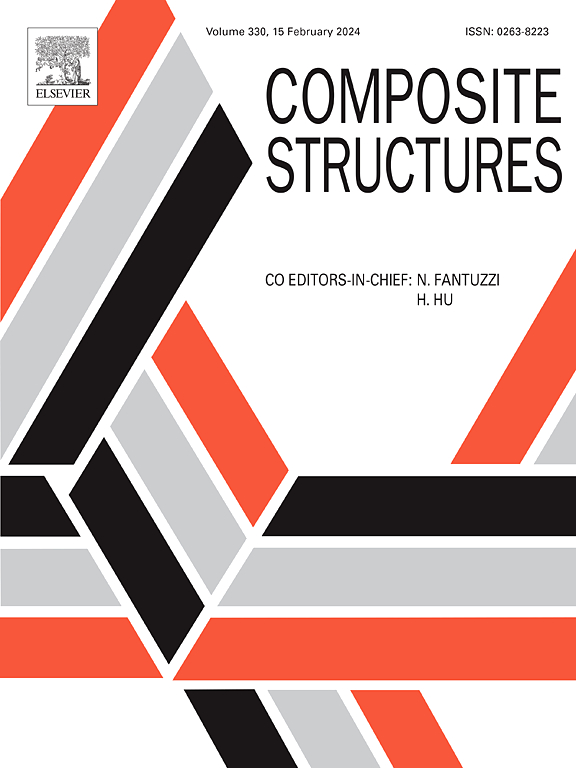Material and thickness optimization of microscale in-plane FG thin-walled structures using deep neural network-assisted artificial hummingbird algorithms
IF 7.1
2区 材料科学
Q1 MATERIALS SCIENCE, COMPOSITES
引用次数: 0
Abstract
This paper introduces efficient single- and multi-objective optimization approaches for designing material and thickness variations in microscale in-plane functionally graded (IFG) variable-thickness thin-walled structures. The isogeometric multi-mesh design concept is employed to generate two distinct non-uniform rational B-spline (NURBS) meshes at different resolutions. The coarser mesh defines the microshell geometry and profiles of thickness and material volume fraction, with values at control points as design variables. A deep neural network (DNN)-based surrogate model of high-fidelity isogeometric analysis (IGA), built on a finer NURBS mesh combined with Mindlin’s strain gradient elasticity and Reissner–Mindlin shell theory, is integrated with the Artificial Hummingbird Algorithm (AHA) and its multi-objective variant (MOAHA). Numerical examples demonstrate the superior efficiency of DNN-AHA and DNN-MOAHA over the IGA simulation-driven counterpart and traditional optimization methods such as particle swarm optimization and genetic algorithms. The influence of material, thickness, and strain-gradient parameters on optimal FG microsized structure designs is thoroughly examined.
基于深度神经网络辅助人工蜂鸟算法的微尺度平面内FG薄壁结构材料和厚度优化
介绍了微尺度平面内功能梯度变厚薄壁结构材料和厚度变化的单目标和多目标优化设计方法。采用等几何多网格设计思想,生成两种不同分辨率的非均匀有理b样条(NURBS)网格。粗网格定义了微壳的几何形状和厚度和材料体积分数的轮廓,控制点的值作为设计变量。基于深度神经网络(DNN)的高保真等高几何分析(IGA)代理模型,结合Mindlin应变梯度弹性理论和Reissner-Mindlin壳理论,建立更精细的NURBS网格,并与人工蜂鸟算法(AHA)及其多目标变量(MOAHA)相结合。数值算例表明,DNN-AHA和DNN-MOAHA比IGA模拟驱动的算法和传统的优化方法(如粒子群优化和遗传算法)具有更高的效率。研究了材料、厚度和应变梯度参数对FG微尺寸结构优化设计的影响。
本文章由计算机程序翻译,如有差异,请以英文原文为准。
求助全文
约1分钟内获得全文
求助全文
来源期刊

Composite Structures
工程技术-材料科学:复合
CiteScore
12.00
自引率
12.70%
发文量
1246
审稿时长
78 days
期刊介绍:
The past few decades have seen outstanding advances in the use of composite materials in structural applications. There can be little doubt that, within engineering circles, composites have revolutionised traditional design concepts and made possible an unparalleled range of new and exciting possibilities as viable materials for construction. Composite Structures, an International Journal, disseminates knowledge between users, manufacturers, designers and researchers involved in structures or structural components manufactured using composite materials.
The journal publishes papers which contribute to knowledge in the use of composite materials in engineering structures. Papers deal with design, research and development studies, experimental investigations, theoretical analysis and fabrication techniques relevant to the application of composites in load-bearing components for assemblies, ranging from individual components such as plates and shells to complete composite structures.
 求助内容:
求助内容: 应助结果提醒方式:
应助结果提醒方式:


